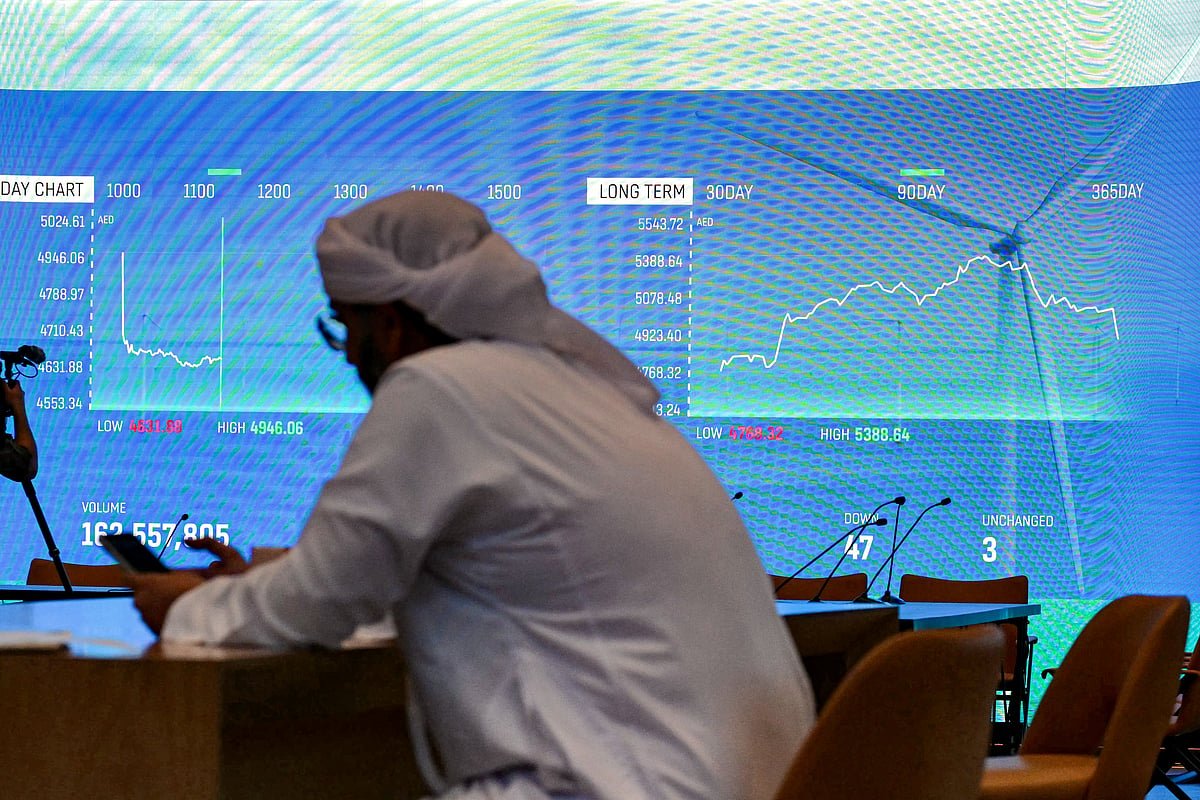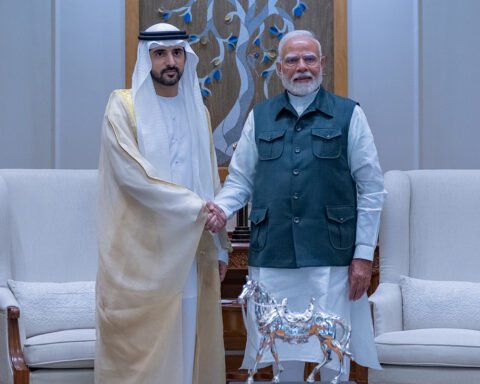
Middle East Markets Plunge Amid Oil Shock and U.S. Tariffs in Perfect Storm
GCC equities nosedive as surprise Opec+ output hike and U.S. tariffs send shockwaves through regional markets.
by Allen Cot
·
Gulf stocks reel from unexpected Opec+ output hike and aggressive U.S. tariffs, triggering a regional sell-off that threatens economic ambitions across the GCC.
Middle East Markets Plunge Amid Oil Shock and U.S. Tariffs in Perfect Storm
Stock markets across the Middle East experienced a brutal sell-off on Monday, battered by the twin shocks of a surprise Opec+ output hike and an escalation in the U.S.-China trade war. The result: a dramatic unraveling of investor confidence that market watchers have dubbed a “regional bloodbath.”
The turmoil, echoing global sell-offs, has placed oil-reliant Gulf economies under intense pressure, casting a long shadow over national budgets and economic diversification agendas like Saudi Arabia’s Vision 2030 and the UAE’s IPO-fueled expansion.
UAE Markets Lead the Tumble
In the UAE, the Dubai Financial Market (DFM) opened 6.0% lower, with flagship stocks like Emaar Properties crashing 9.0%, and Dubai Islamic Bank and Emaar Development shedding more than 7.5% and 8%, respectively, within minutes.
The Abu Dhabi Securities Exchange (ADX) was similarly hit, down 4% as heavyweights Adnoc Gas dropped 9.3%, First Abu Dhabi Bank (FAB) declined 8.1%, and Multiply Group slid 7.2%. Banking stocks, a traditional pillar of the ADX, absorbed the heaviest blows.
Gulf-wide Fallout
The shockwaves extended beyond the UAE. Saudi Arabia’s Tadawul All Share Index (TASI) plunged 6.78%, closing at 11,077.19—its steepest single-day drop in months. Over $2.24 billion in trading volume was recorded, with a staggering 252 stocks retreating and only one advancing. Since the U.S. tariff announcement on April 2, the TASI has shed over 10%, with capital goods, insurance, and pharma sectors each down between 14% and 15%.
Even regional giant Saudi Aramco, one of the world’s most valuable companies, saw its stock drop over 5% on Sunday, continuing into Monday and wiping billions from its market cap.
In Qatar, the stock exchange tumbled 6% over two days, while Boursa Kuwait shed over 5% on Sunday, with additional losses on Monday.
Oil: The Heart of the Storm
Crude oil prices have plunged nearly 15% in just five days, with Brent crude falling to around $63 per barrel, far below the estimated $80–$90 break-even for many GCC producers. This 30% decline from last year’s highs adds immense fiscal strain to oil-based economies.
“OPEC+’s unexpected move to speed up production hikes couldn’t have come at a worse time,” said James Mathew, CEO of UHY James. “Oil below $65 and tariffs this aggressive could push GCC growth forecasts into negative territory.”
Tariffs Rattle Global Trade Stability
The U.S. recently imposed 10% tariffs on all GCC countries, with Iraq facing 39% and Syria 41%. The tariff escalation, particularly against the backdrop of an already intensifying U.S.-China trade war, has shaken global markets and clouded trade predictability.
“The economic battle between these two giants is having far-reaching consequences,” said Sajith Kumar, CEO of IBMC Financial. “To navigate this uncertain landscape, UAE investors will need to separate signal from noise and look for hidden opportunities amid the chaos.”
Fear Rules the Markets
“Markets are running on extreme fear right now,” added Vijay Valecha, CIO at Century Financial. “Investors are shifting to safer assets. The collapse in oil prices has triggered a strong sell-off, particularly in energy and banking stocks, which are the Gulf’s lifeblood.”
eToro analyst Josh Gilbert warned the worst might not be over. “Trump’s statement that no policy changes are planned to address the current sell-off suggests we could see further downside this week.”
IPOs and Foreign Inflows at Risk
Despite recent resilience fueled by an IPO boom, UAE markets now face a reckoning. Foreign inflows into GCC equities hit $2.47 billion in February, more than doubling January’s numbers, according to Iridium Advisors. That momentum may be short-lived if the current volatility continues.
A Fragile Future
With Aramco’s valuation threatened, Vision 2030 ambitions at risk, and investor sentiment shaken, the Middle East’s economic outlook stands at a critical crossroads. Whether this downturn stabilizes—or spirals further—will depend heavily on how global powers respond in the coming days.
As investors across the region await signals of recovery, one thing is clear: the intersection of geopolitics and oil continues to define the fate of the Gulf.
Post Views: 364
- UAE Announces New Corporate Tax Rules to Streamline Business Compliance
- Goldman Sachs Slashes STOXX 600 Forecast Again Amid Tariff Uncertainty and Strong Euro
- ‘Attentive’ ECB Poised to Counter Euro Surge Amid Trade and Currency Tensions
- Abu Dhabi Enforces Ban on New Groundwater Wells to Safeguard Vital Water Reserves















